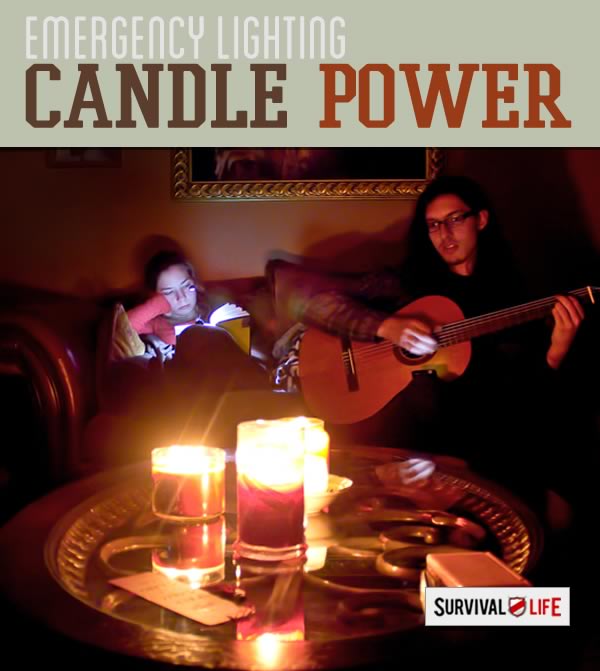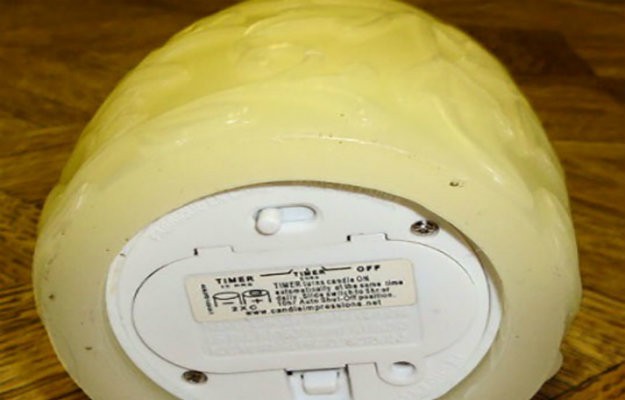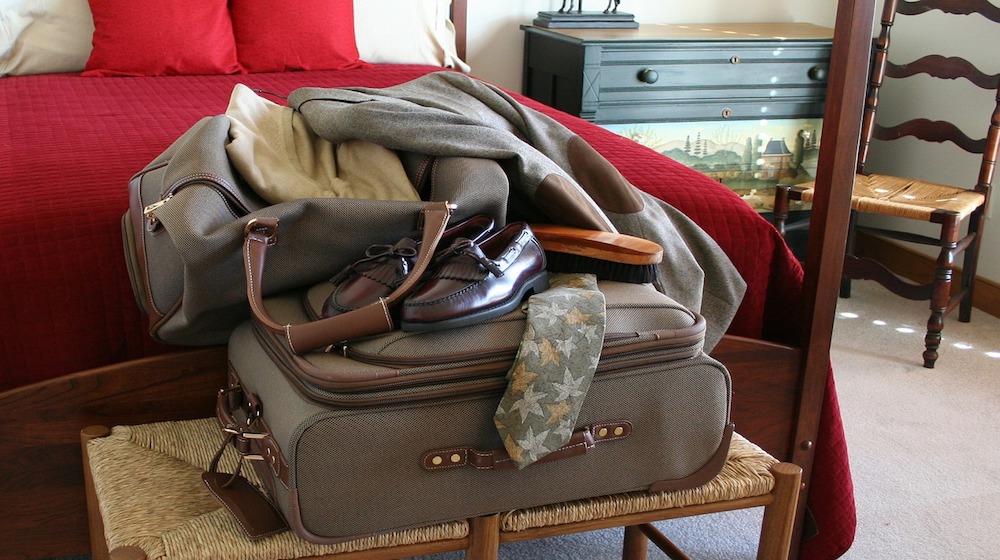Archives
Emergency Lighting: Candle Power

In case of a natural disaster, EMP, or just a run of the mill blackout, you need to be prepared with a back-up source of light. Emergency lighting is one of the most important things to consider when preparing for an emergency situation.
Emergency lighting and power expert Robert Brenner is back with some ideas on how to use candles in a survival or emergency situation. Read on to learn more.
Light has been created using candles for over 2,000 years. The first candles were made by the Chinese using whale fat. They were also made for temples in India from boiled cinnamon, and they’ve been made from olive oil, tallow (animal fat), Yak butter, beeswax, spermaceti oil from sperm whales, and paraffin wax. Now you can find candles made from soybean wax, paraffin wax, and palm wax.
Emergency Lighting: Candle Power
The candle is a solid block or cylinder of wax with an embedded wick that is lighted with a naked flame (think match) to create a burning flame and light. As the wick burns, the heat melts and vaporizes some of the wax—the fuel. The vaporized wax moves up through the wick and mixes with oxygen to create a flame. The wick is typically fashioned using tightly braided strands of cotton that curl over when burned and then are consumed in the flame. This creates a self-trimming wick with a constant rate of fuel consumption. As the candle flame burns, the wax is used and the candle get shorter.
Candles were often used to measure time. It can take a finite time for the candle wick to burn down shortening the candle and this can be used as a time marker. Candles have a rich tradition and many are still used today in houses of worship, during meditation sessions, and on birthday cakes.
There are two types of candles: the burning flame candle and the flameless battery-powered candle.
Candle Light Option #1 – Burning Flame Candle
When it’s burning, a paraffin wax candle creates about 80W of heat and about 13 lumens of light. This is equivalent to 0.16 lumens per watt—about 100 times less than the lumens produced by a 100 watt incandescent light bulb. So you get light but it takes multiple burning candles to make it bright enough to read this book.
According to the previous discussion on light and how many lumens are needed for certain activities, we know that it’s possible to read a map in 5 lumens of light. You can read a book in 20 lumens, so using two 13-lumen candles should give you the brightness you need. Add more candles and the area gets even brighter. Now recall the 2322+ lumens required to put 250 lux of illumination in a room. That’s a whole lot of lumens, and that will require a whole lot of 13-lumen candles—179 of them.
Then you have the issue of burning up the oxygen in the room and dealing with the exhaust smoke. While a burning candle can produce a wonderful fragrance, the burning wick also creates toxic gas in a confined space. So you should only use a candle in a well-ventilated room.
How long can you expect a candle to keep a flame burning? What is its burn time?
For the simple candle, the burn time depends on the candle size, height, wick, and candle material. According to data at www.ehow.com, small tea light paraffin wax candles last 4 to 6 hours. A votive candle in a jar can last 7 to 9 hours. Large jar candles burn 5 to 7 hours per ounce of wax. The tall pillar candles burn based on their diameter—a 2” wide pillar should burn for 10 hours for every inch of height. Get a 3” wide candle and it burns for 16 hours per inch of height. The fat 4” wide candles can burn at 40 hours per inch. Use a standard taper candle and it should burn 1 hour per inch of height. Sometimes you can find a note printed on the bottom or exterior packaging of some candles stating how long that candle will last.
The key to using candles is they should never be left unattended. There is a safety risk associated with using candles to light the rooms in a home. Candles have been responsible for hundreds of house fires. Recently, a resident in my city left home while candles were burning in his kitchen, hallway, and bedroom. The candle in the kitchen fell over and started a fire that spread into the attic and charred most of the house causing $350,000 in damage. If you use candles, be in the room with them and watch over their operation.
Candle Light Option #2 – Flameless Candle
The risk associated with burning candles is why I prefer scented, battery-operated candles. You get the same lumens of light and a great scent without the fire hazard.
Battery-powered candles provide night-light brightness about eight hours a day, yet work for months before battery replacement is necessary. A 3” by 6” flameless candle uses two C cell batteries and typically activates and produces light for 5 to 8 hours each day. This flameless candle has a 500-hour battery life. It’s as bright as a 7W night light and it flickers like a candle.
If it’s just light you want, I suggest you opt for a battery-powered flameless candle. They smell pleasant, look like a flickering candle, and add a nice touch to any room at night. We’ve used these for years.
Emergency Lighting | How Long Will That Bulb Last?
Emergency Lighting | Flashlight Power
Make an Emergency Candle Out of Butter
-

 Do It Yourself7 months ago
Do It Yourself7 months agoParacord Projects | 36 Cool Paracord Ideas For Your Paracord Survival Projects
-

 Do It Yourself9 months ago
Do It Yourself9 months agoHow To Make Paracord Survival Bracelets | DIY Survival Prepping
-

 Do It Yourself9 months ago
Do It Yourself9 months ago21 Home Remedies For Toothache Pain Relief
-

 Do It Yourself10 months ago
Do It Yourself10 months agoSurvival DIY: How To Melt Aluminum Cans For Casting
-

 Exports8 months ago
Exports8 months agoAre Switchblades Legal? Knife Laws By State











Pingback: Emergency Lighting: Candle Power | Patriot Powered News
Pingback: Emergency Lighting: Candle Power » Survival Gear & Food Storage
Great Grey
February 26, 2015 at 12:45 PM
Just remember that battery powered lights may be only a short term solution, in a shft batteries maybe unavailable or too expensive. Also LEDs are EMP sensitive. Yes the long battery life and low fire hazard are good but, don’t expect them to be the only long term lighting you will need.
Caelwyn
June 28, 2019 at 8:45 AM
Agreed and I also suggest making a small Faraday cage to keep a supply of batteries and battery driven lights. They are easy to make just computer query Faraday cage.
Pingback: DIY Survival Candles: The Orange Lantern | Survival Life
Pingback: What to Include in Your Lights Out Box | Survival Life
Pingback: Shedding A Little Light On Cheap Solar Power - Survive!
Pingback: Shedding A Little Light On Cheap Solar Power - Survival Patch
Pingback: Tips for Urban Homesteaders | Survival Life
Pingback: Shedding A Little Light On Cheap Solar Power | Survival Life
Pingback: Simply Collected Flickering Flameless Candles Battery Operated with : Tech Family needs